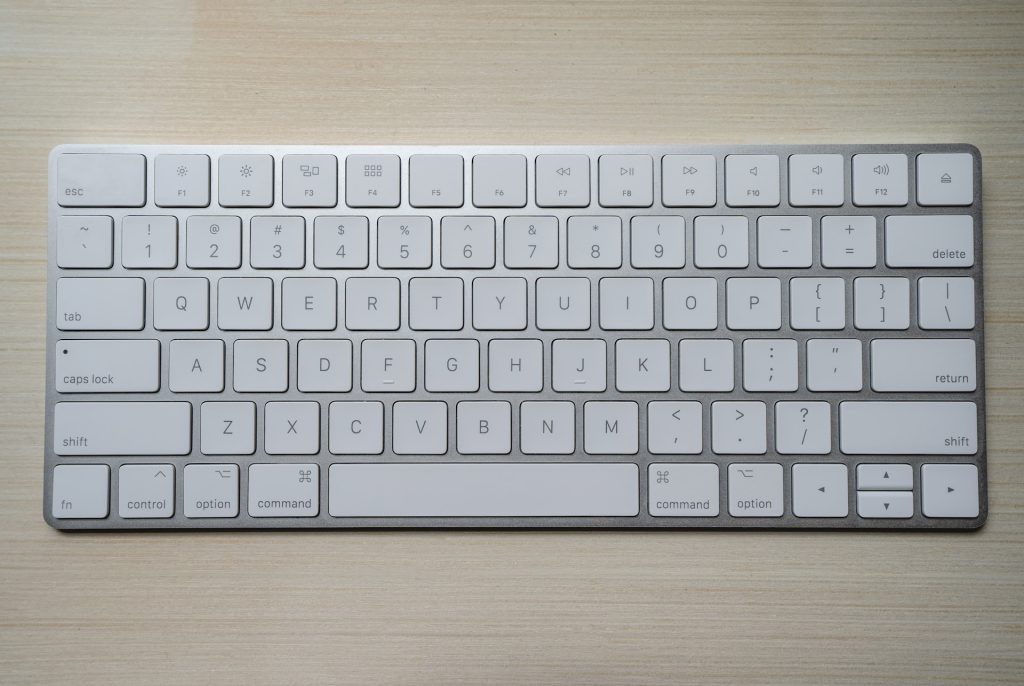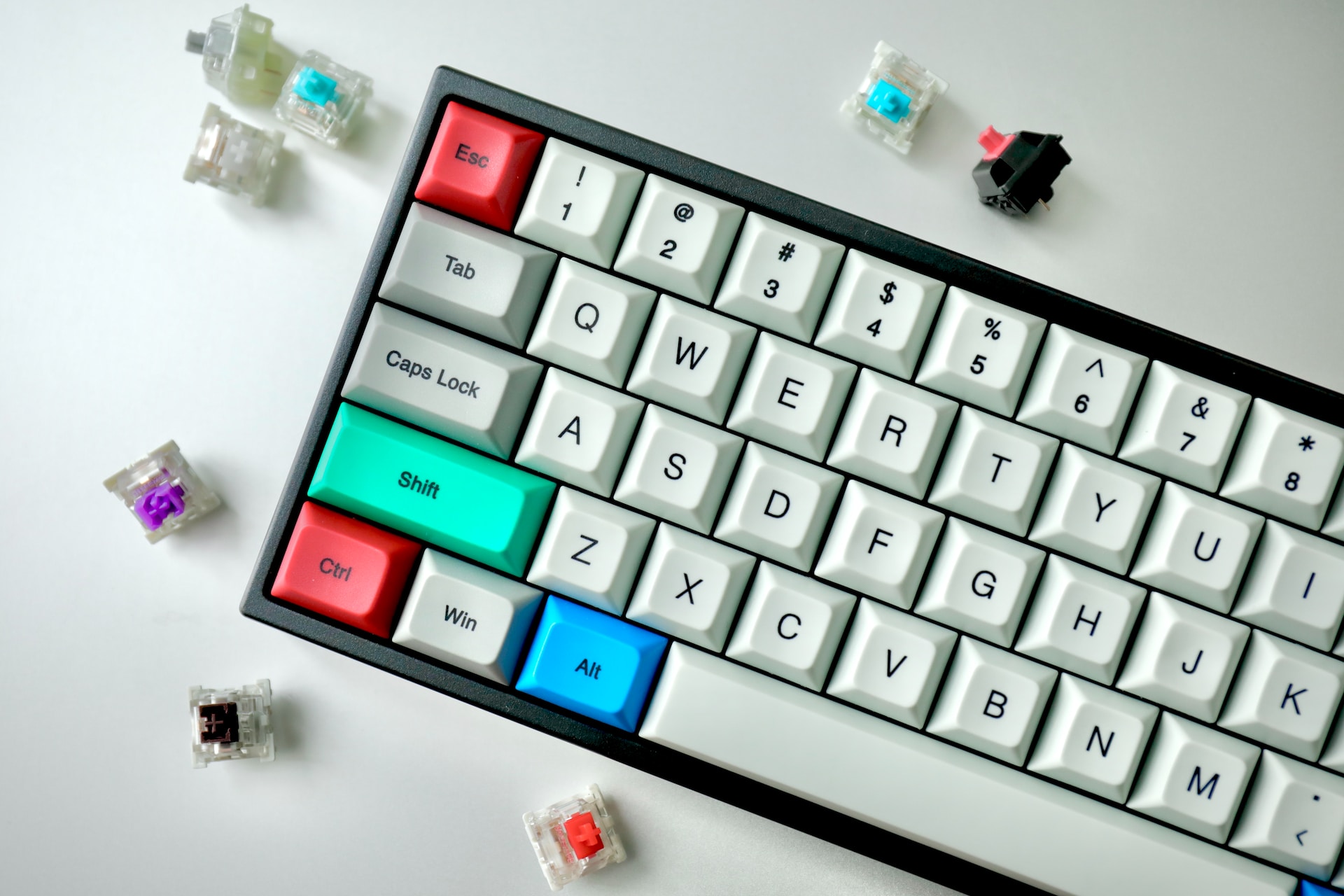There are hundreds of computer keyboards available on the market or through providers such as RS Electronic Components. As such, it can be overwhelming for buyers to decide which keyboard to buy. In this article, we outline some of the most important things to consider before purchasing a keyboard.
How Much Should a Computer Keyboard Cost?

For those simply looking for a keyboard for basic typing, they can probably get away with buying one that is relatively cheap. However, for those looking to get something more out of their keyboards, they more they will likely have to shell out more because aluminum frames, built-in lighting, and multiple key functions are features that cost extra. There are many options, though with so many keyboards on the market, people are sure to find something that fits their needs and budget.
$10-$50: The simplest and most basic price tier, these include regular-sized and travel-sized keyboards, as well as some foldable waterproof options (that are made of silicone). Wired, wireless and Bluetooth models can also be found at this price.
$50-$100: Options tend to include more wireless functions and compatibility with a broader range of devices for each keyboard. They also offer more ergonomic options, with some other potential hardware extras like built-in touchpads, backlights, and non-silicone foldable models. Buyers are more likely to find gaming keyboards here.
$100-$200: Again, more of everything, along with more mechanical key options for a more tactile feeling while typing.
$200+: Often includes more than just a keyboard, although the keyboard itself will feature a lot of premium functions and options. Can sometimes come with extra ergonomic accessories, or even a portable monitor.
Ergonomics
For those needing to spend hours typing on a keyboard, it is best to get one with at least some basic ergonomic features. This is because typing is a very repetitive task, that over time can cause a variety of physical problems ranging from simple fatigue to serious conditions such as carpal tunnel syndrome.
As such, keyboard makers make ergonomic models that are designed to force typists to hold their hands at an angle that is more comfortable and reduces stress. Ergonomics can take on various forms, such as splitting the keys or having curves. That said, buyers should expect a learning curve, and it may be uncomfortable while their hands adjust and relearn how to move around the keyboard.
Hotkeys and media keys
More keyboards come with a variety of hotkeys and media keys except for travel keyboards. Similar to keyboard shortcuts, these keys allow users to perform tasks quickly. Media keys, which include tasks such as volume and video control, are invaluable if a buyer uses their keyboard in the living room to control their media systems.
Size of the keyboard
Keyboards come in a variety of different sizes. They tend to fall into four main categories: full-size, tenkeyless, compact, and ergonomic.
Full-size: These keyboards have all keys, including letters, numbers, function keys, modifiers, arrow keys, and a number pad. The largest of all sizes, these keyboards force users to place their mouse farther from their body, which can put a strain on the shoulders, neck, and back.
Tenkeyless: This layout has all keys except the number pad. Tenkeyless keyboards are several inches more compact, but they still have all of the most commonly used keys.
Compact: The compact category is a catchall for a variety of sizes and layouts that take up less horizontal desk space compared with full-size and tenkeyless models. Sizes range from 75% to 40% and smaller.
Ergonomic: These can come in any of the above sizes, but they are split down the middle so users hold their hands, wrists, arms, and shoulders at a more natural angle than they would on traditional flat keyboards.
Wired vs wireless
Another feature buyers need to decide is whether they want to have a wired or wireless keyboard. Each type has its own advantages and limitations.
Wired keyboards limit a user’s distance range, but they will never search for batteries or have to worry much about connection mishaps. On the other hand, wireless keyboards can let users type no matter the distance, and they will never get tangled up by cords, which means less clutter on the desktop.
For those who are looking to buy wireless keyboards, most of them either use USB or Bluetooth technology for connectivity. If a user is going for a Bluetooth route, ensure that any devices have built-in Bluetooth compatibility. If it does not, they will have to pick up a Bluetooth receiver and pair the device that way.
Other features
1. Backlit keyboards
These are the same as any other keyboard, except they emit light from behind the keys. This makes the keys easier to see, and some offer custom light settings that people can use to color-code different areas for various tasks.
2. Flexible keyboards
These keyboards can easily be rolled up and carried, as a result of typically being made of silicone. This makes them straightforward to clean, durable, and portable, and they can also withstand minor spills.
3. Mechanical keyboards
Most mechanical keyboards are designed to look or feel like a classic typewriter. They often produce a more tactile and audible click as people type.
































































